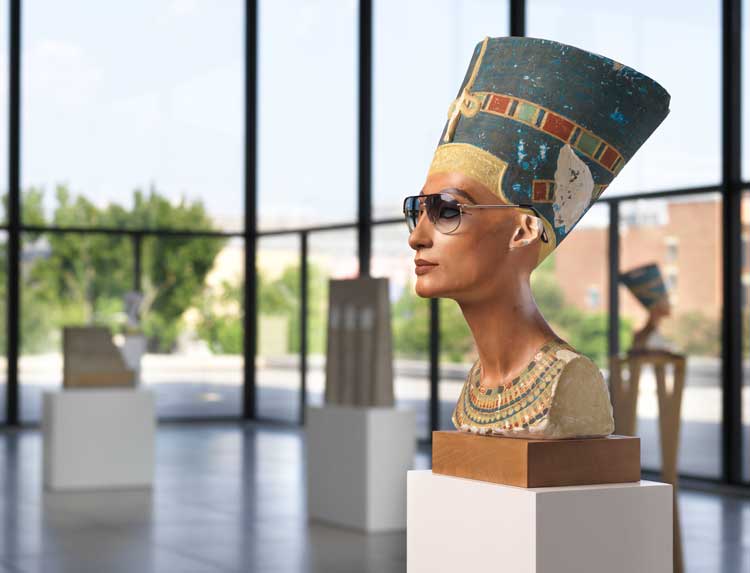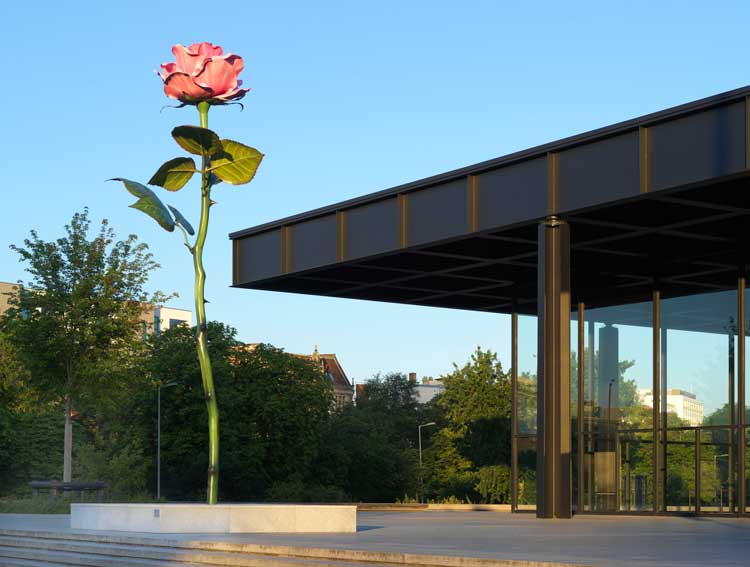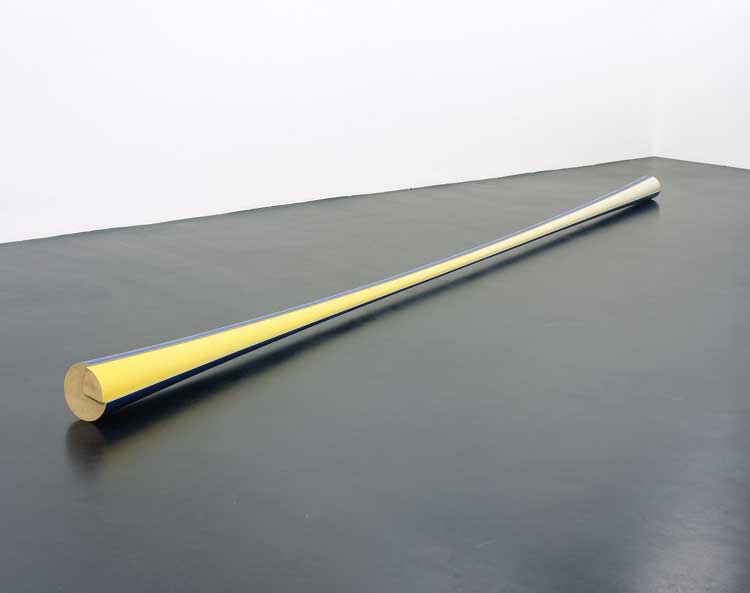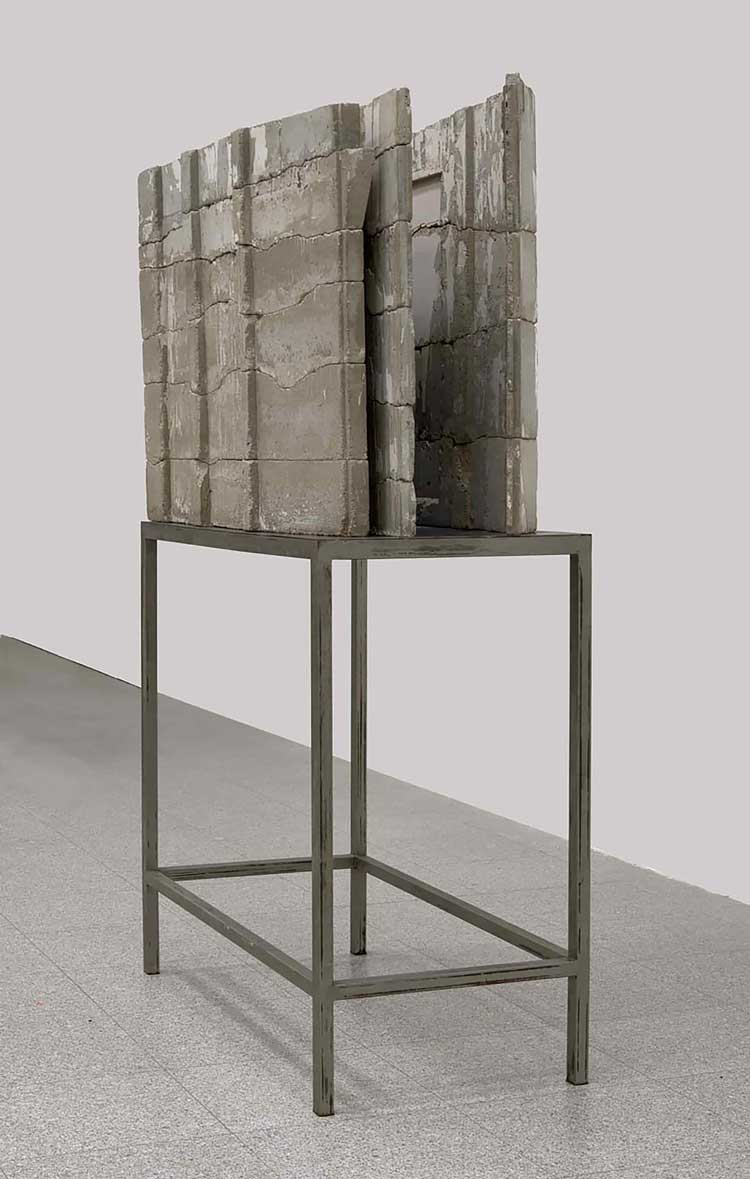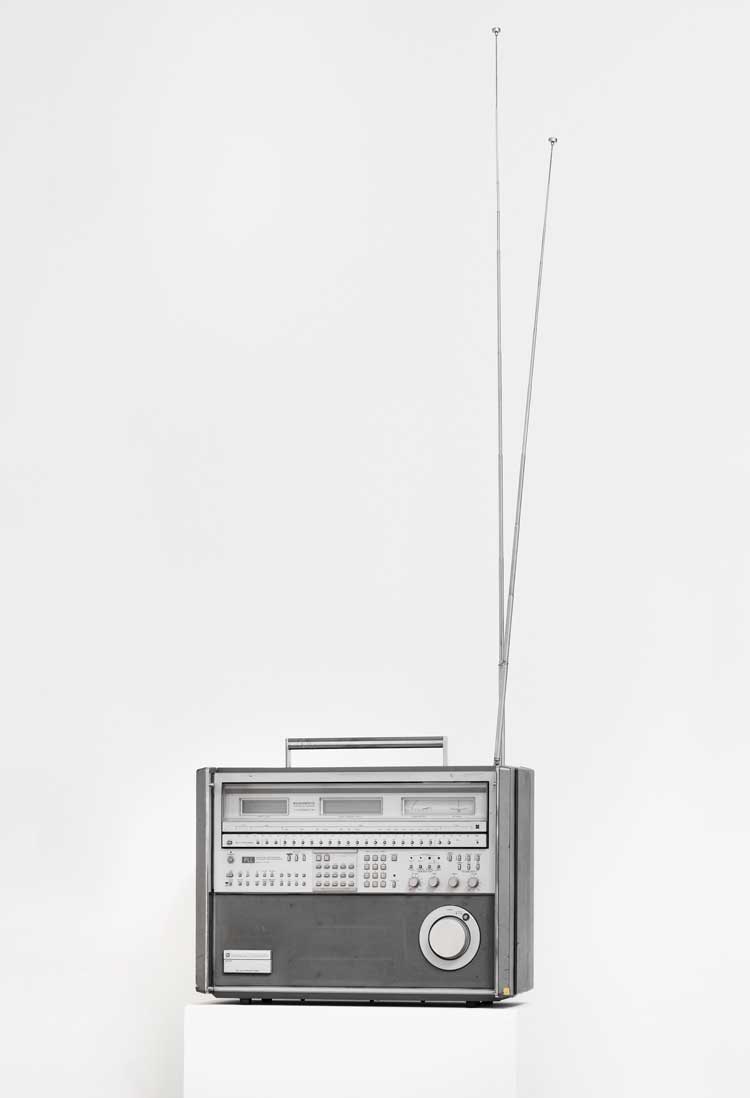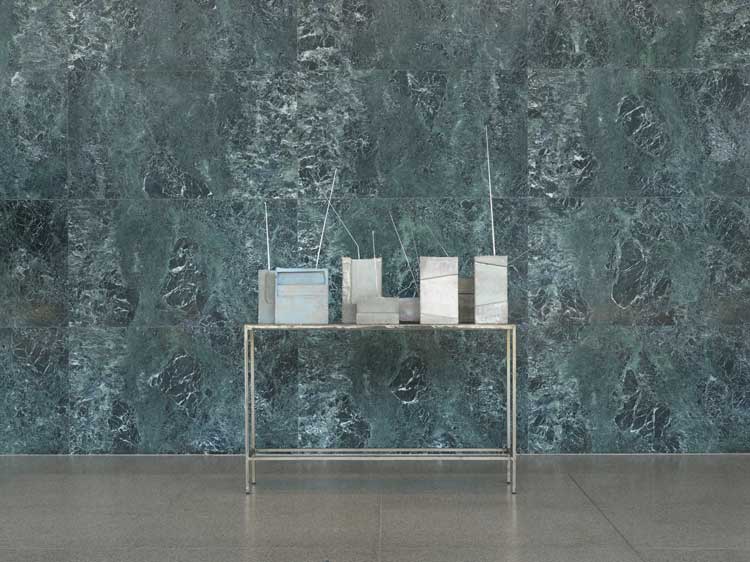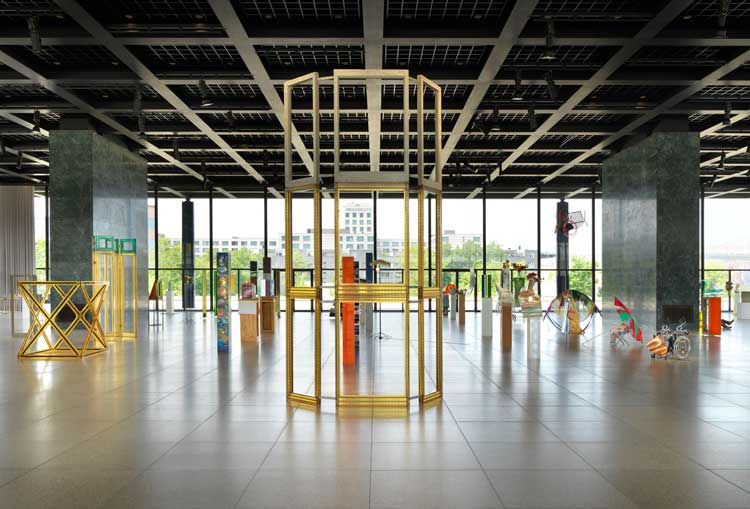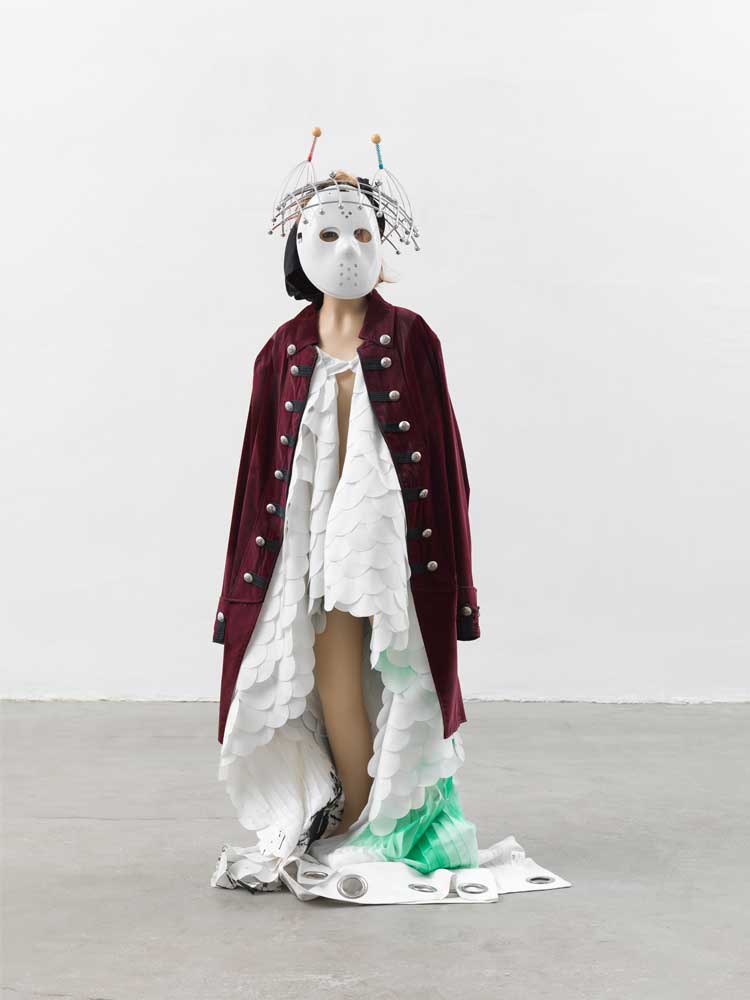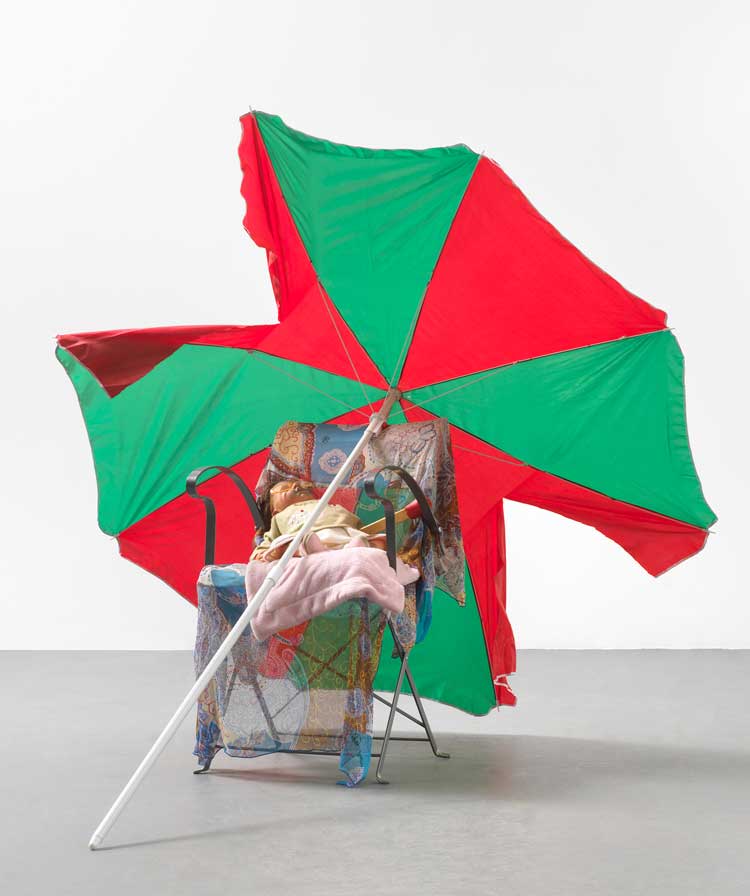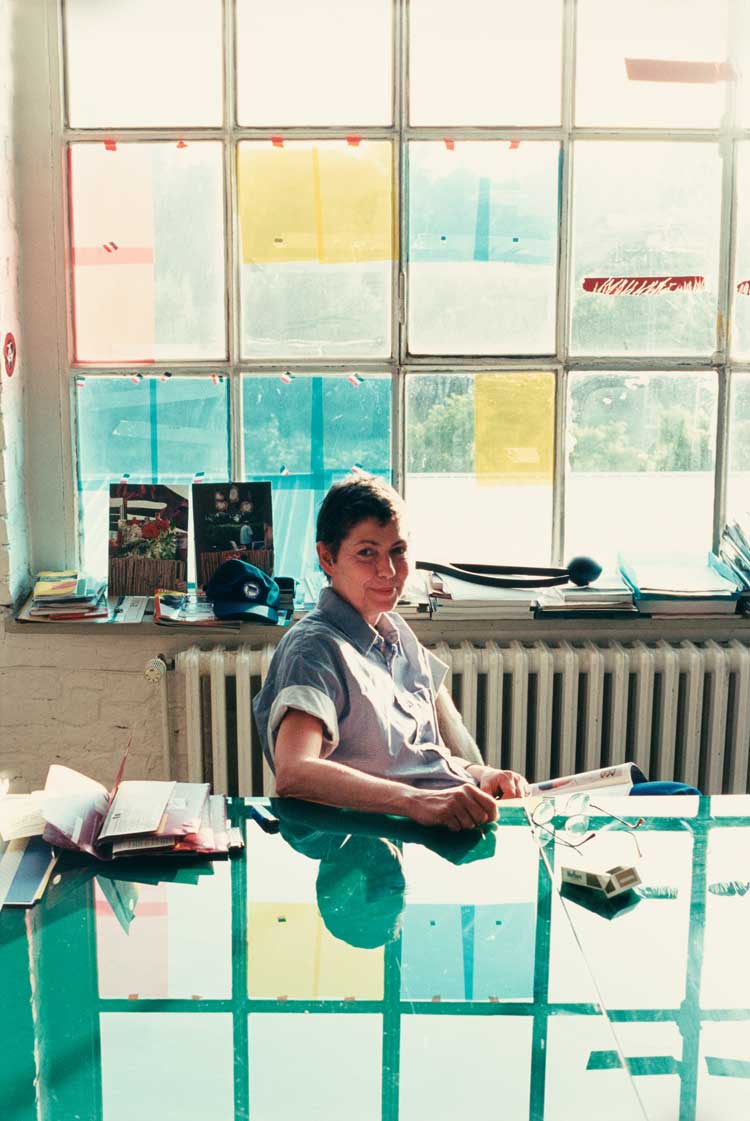

Neue Nationalgalerie, Berlin
13 July – 27 November 2023
by JOE LLOYD
Isa Genzken (b1948) has never lacked ambition. As a student at Kunstakademie Düsseldorf in the 1970s, she collaborated with a physicist and a cabinetmaker to create slender, lengthy wooden sculptures that lie horizontally along the floor. Miraculously, these Ellipsoide (Ellipsoids, 1976-82) only touch the ground at a single point. Drawn on the computer, then painstakingly hand-carved, they seem to defy gravity. Genzken’s Hyperboloide (Hyperbolos,1976-82) manage a similar trick, resting on two points.
[image3]
When these sculptures were first unleashed, American minimal art was at its peak. Genzken’s work was criticised for breaking its mould. She challenged their rigid forms with soft curves. She returned the craft to a discipline that was becoming increasingly reliant on machine techniques. And she affirmed that abstract sculpture could and should provoke comparison to other things, rather than aspire to a Platonic purity of form. Genzken later recalled: “People would say, ‘It looks like a spear, or a toothpick, or a boat.’ This associative aspect was there from the beginning and was also intentional, but from the viewpoint of minimal art it was absolutely out of the question and simply not modern.” Genzken’s sculptures aggressively reveal the fiction behind such claims. As the curator Laura Hoptman later put it: “They’re a smack in the face to minimalism.”
Half a century later, minimalism has become just one byway in contemporary art’s history. And it is Genzken’s manifold, maximalist oeuvre that seems to better represent the modern age. Sometimes it can seem like the whole of the 20th century is captured within her work: concrete architecture, newsprint, mass-produced plastics, the American dream, printed photography, advertising, electronic technology, subcultures, consumerism and calamity. All these aspects are captured in 75/75, an exhibition of 75 sculptures to celebrate Genzken’s forthcoming 75th birthday, held at Berlin’s Neue Nationalgalerie.
[image2]
The materials, forms and concerns of Genzken’s sculptures are so wide-ranging that the uninformed could easily mistake 75/75 for a group show of a dozen different artists. “In my life,” she said in 2006, “I’ve always been concerned with fluidity and opposed to rigidity.” Her work is defined by a constant movement, darting here and there, sometimes looping backwards but never quite arriving at the same spot. The curators, Klaus Biesenbach and Lisa Botti, have done a particularly good job at capturing this flux.
Genzken’s works are clustered together in series across the Neue Nationalgalerie’s upper floor, which is transformed into a play. The arrangement of the sculptures fosters parallels and connections. There are no hard borders between series. Concrete sculptures modelled on forms from modernist architecture sit next to resin works that echo both construction techniques and minimalist sculpture; clothed mannequins stand next to towering Columns (1994-2003), eye-level skyscrapers. Some series, such as her irreverent Nofretete (2012-18), glasses-wearing plaster busts of Nefertiti, are spread out between other series.
[image7]
Architecture is one of Genzken’s most persistent interests. The formal purity of the Neue Nationalgalerie, Mies van der Rohe’s masterpiece of modernist architecture, provides a striking contrast to Genzken’s chipped concrete pieces and playful resin forms. Mies (2008) features one of the architect’s Barcelona chairs hanging upside down from the ceiling, its cushion sliding off and tacky hula hoops attached to its austere frame. The works of the Fenster (Window) series resemble empty window frames. Windows are used to bring in light and provide views of the outside world; Mies’ building is walled by a continuous sheet of glass that performs both functions supremely well. But Genzken turns windows into aesthetic forms to be observed, in a neat absurdist twist.
[image5]
This tendency to take objects from daily life and turn them into sculptural objects appears often in Genzken’s practice. In 1979, she photographed advertisements for new hi-fi sets, which then seemed the bleeding edge of modernity. She determined that for a sculpture to have a purpose to exist, it had to be better than a stereo set. The Weltempfänger (World Receiver) series was the result. It began with Genzken’s own stereo (1982), still used today in her studio but here placed on a plinth as if sculpted. Then she began creating concrete blocks that imitated its shape. Their antennas became symbols for receiving the matter of the world. They also serve as a sort of bodily extension, groping outwards. Genzken says: “My antennas were also meant to be ‘feelers’, things you stretch out in order to feel something, like the sort of the world and its many tones.” Mein Gehirn (My Brain, 1984) even imagines the artist’s thinking organ as a hunk of plaster with a metal receiver.
[image6]
As Genzken marched on into the 90s, she started experimenting with assemblage and mixed media. She coated columns in photographic prints, as if cut out from a magazine. One is covered in fish and other aquatic creatures. Genzken adds an edge of the absurd. One of the Zwei Regiesessel (Director’s Chairs, 2003), which resembles a bench, constantly rotates; two feet peek out from within it. Gradually, more bric-a-brac from contemporary life enter her work: action figures, newspapers, shop mannequins. If she was concerned before with overcoming and outdoing modernity, here she puckishly pushes it aside. One series of abstract sculptures resembling kitschy architectural models is even called Fuck the Bauhaus (2000), sticking two fingers up at a sacrosanct moment in Germany’s history.
[image4]
These works combine found materials from the streets of New York into garish assemblages of cheaply mass-produced items, architectural models from a twisted dimension. While her concrete works seem like haunted fragments of the fallen modernist moment, Genzken’s later pieces seem more trenchantly critical of the rampant consumer capitalism that followed. The more colourful her works, the more terror seems to lurk beneath the surface. A 2006 Untitled work features a baby doll on a garden chair, sheltered beneath a tattered parasol; she holds a matchstick and her skin is toned a putrid grey. One 2019 work from the Schauspieler (Actors) series reimagines Velázquez’s Rokeby Venus as an inert mannequin, but posed so that the mirror reflects her rear.
[image9]
These assemblages seem to represent an uneasy pact between the human body and the clutter of products we surround ourselves with. Genzken’s Venus lies next to a poster advertising Incredible India with a tiger, land and nature turned into aspiration and cheap novelty. The final work of the entire exhibition, Untitled (2018), is a pile of newspapers, magazines, CDs and shopping bags, artfully strewn across the floor. Headlines face the ceiling, the decontextualised howls of the press. Modernity has reached its saturation point, offering both too much and too little. It is enough to drive you back into the arms of the Bauhaus.
